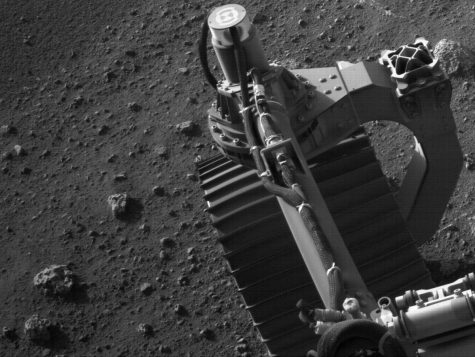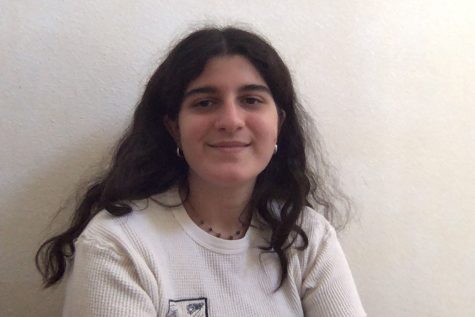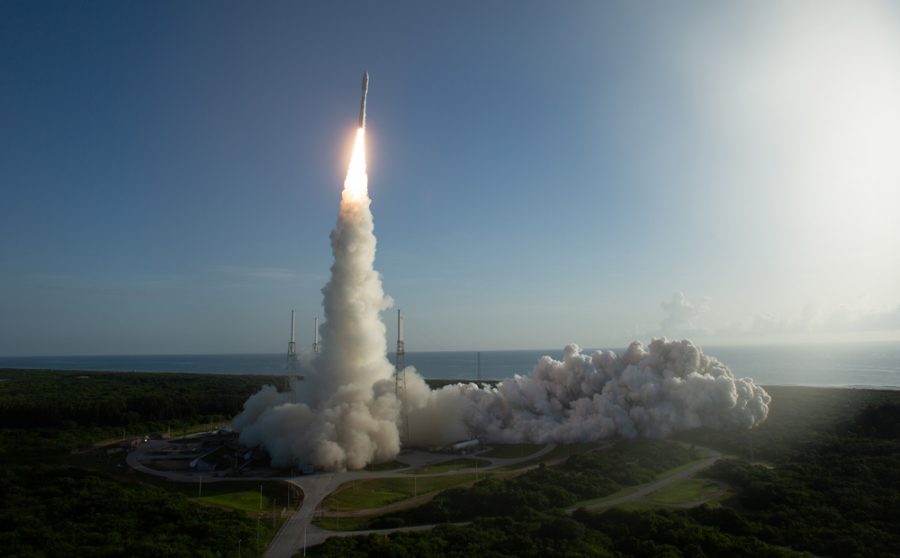Mars Rover Lands Close to Home
On February 18, 2021, Westridge watched as the Mars rover Perseverance touched down safely at Jerezo Crater, marking an incredible win for space travel and, more intimately, for members of the Westridge community, one of whom worked on the project.
The rover launched last year after years of work done by Pasadena’s own Jet Propulsion Laboratory (JPL). According to the NASA description of the project, the rover’s mission is to “seek signs of ancient life and collect samples of rock and regolith (broken rock and soil) for possible return to Earth.”
The mission is distinguished by its search for life on Mars as well as some of the unusual technologies it introduces, such as the Mars Helicopter — the first powered flight on Mars, and more advanced instruments that are able to see microscopic level bacteria.

But this mission is brought close to home through Adam Stelzner, parent of Caledonia S. ‘21 and Chief Engineer of the Mars 2020 mission.
Caledonia has been following the mission with her dad; she described her relief and excitement after the landing. “I was mostly just nervous for him and the entire NASA group who had all worked so hard on Perseverance when watching the landing. To see it land and hear the confirmation was a huge relief,” she explained.
It is one ambitious project to the next for Mr. Stelzner, who will now be a part of the process of returning samples of rock from Mars back to Earth.
“No rest for the wicked,” Stelzner remarked.
Perseverance will drill the samples before sealing them in tubes and leaving them on the Mars surface, in the hope that a rover from the European Space Agency will pick them up later. Eventually, the samples will be transferred from one rocket onto another spacecraft that will orbit Mars before returning to Earth.
Steltzner clarified what this mission has meant for laypeople and those less interested in science. “When we explore, we are asking what is around the next bend. That arc of our curiosity is a fundamental gesture of our humanity. For the layperson, we are performance artists in the art of the possible,” he explained.
Steltzner characterizes space exploration as a form of art with some humor, describing how he believes the mission will impact the future. “It most certainly won’t lower the price of gasoline or create another orange flavored drink mix, but as with any profound piece of art, it changes not only the artist but all who view it.”
The mission’s close ties to Westridge have inspired the entire student body, including those hoping to pursue careers in aerospace.
Aaron Eichelberger, Upper School Science Teacher, said, “Having the resources close by, knowing that we have Westridge students who have parents at JPL — it certainly makes it more real for me and that it’s not just something that’s happening elsewhere.”
Upper Schooler, Corina D. ‘21’s parents, Sumita Nandi and Charles Dunn, work at JPL and have followed the mission closely. Corina said, “I don’t think I’m going to go into aerospace, but I think this latest Mars landing is a testament to human ingenuity. It is so inspiring to know that endeavors of this scale are possible.”
For those hoping to enter his field, Steltzner says, “The three names of our most recent spacecraft come to mind as keynotes for rising engineers: Curiosity, Perseverance, and Ingenuity. Stay curious, persevere and don’t fear ingenuity.”

Sophia is the 2020-2021 Managing Editor of Spyglass and super excited to be taking on the position this year. She’s dedicated to building community,...




























![Dr. Zanita Kelly, Director of Lower and Middle School, pictured above, and the rest of Westridge Administration were instrumental to providing Westridge faculty and staff the support they needed after the Eaton fire. "[Teachers] are part of the community," said Dr. Kelly. "Just like our families and students."](https://westridgespyglass.org/wp-content/uploads/2025/03/dr.-kellyyy-1-e1748143600809.png)



























Sosi Day • Apr 12, 2021 at 3:39 pm
Amazing article, Sophia! I especially loved the part about science being a form of artistic expression — very cool 🙂